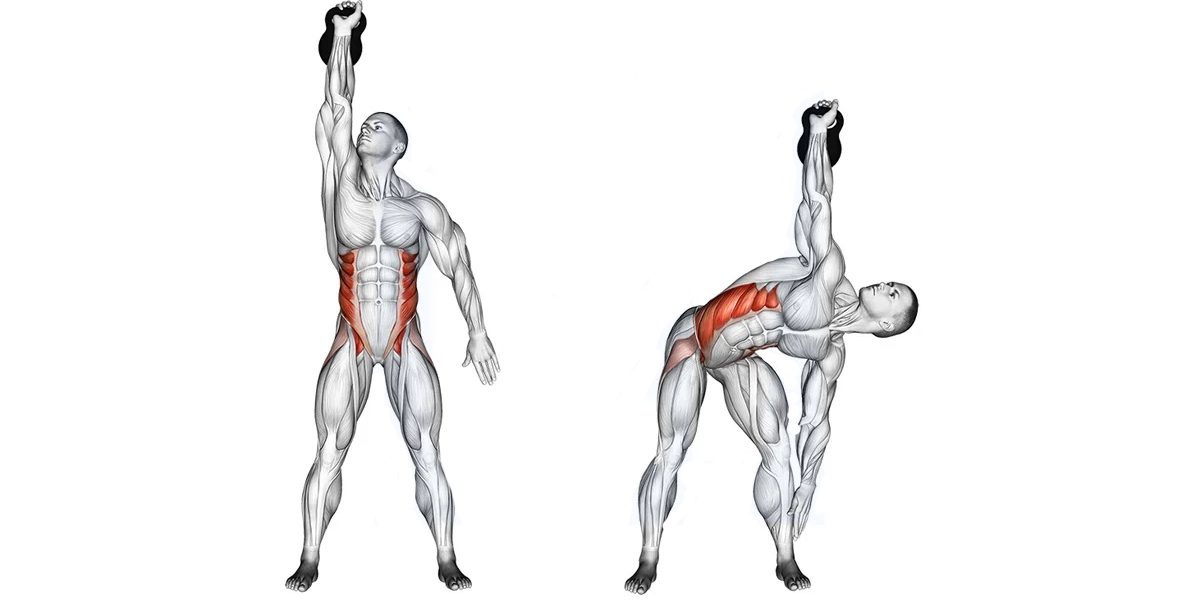Alright, let’s talk kettlebell for beginners. Honestly? They’re one of the most versatile pieces of gear in my gym, and I still remember the first time I picked one up – felt awkward, heavy, and honestly, a bit intimidating. But trust me, once you crack the basics, they unlock incredible full-body strength and conditioning. This guide cuts through the noise and gives you exactly what you need to start safely and effectively. Let’s get into it.
1. What Are The Kettlebell for Beginners Learn First?
- The Two-Handed Kettlebell Swing: This is THE cornerstone. It teaches you the powerful hip hinge – the engine behind almost every kettlebell move.
- The One-Handed Swing: Once you own the two-hander, switching to one hand builds grip strength and core stability. It forces your body to resist rotation.
- Kettlebell Front Squat (Goblet Style): Holding the bell close to your chest teaches you to squat deep with an upright torso – brilliant for mobility and leg strength. It instantly shows you if your form is off.
- The Clean: It looks smooth when done right, but takes practice to avoid banging your wrist.
- The Press: Finally, pressing the bell overhead from that solid rack position. This builds serious shoulder and upper body strength safely.
2. Weight to Start With Kettlebell for Beginners and How to Hold A Kettlebell
- Men: Often start well with a 16kg (35lb) bell for swings and lower body moves. You might need an 8kg or 12kg (18lb or 26lb) for cleans, presses, and exercises where the bell is overhead or held close, especially if pressing overhead is new.
- Women: A great starting point is usually 8kg or 12kg (18lb or 26lb).
Holding It Right:
- The Horns: For swings, cleans, squats – grip the handle firmly with both hands (or one for one-handed moves). Your fingers should be through the handle, knuckles facing forward/down, not wrapped over the top like a suitcase. Grip it like you mean it!
- The Handle: For exercises like the Halo or holding it upside down (like in the Goblet Squat), you’ll cradle the horns or the body of the bell itself. It should feel stable against your forearms/chest.
- The Rack Position (Clean/Press): The bell rests on the back of your forearm, tucked tightly into your chest, elbow glued to your ribs. Your wrist should be straight, not bent back. This feels weird at first, but it becomes a solid, strong position.
3. Best Kettlebell Exercises for Beginners
1) Kettlebell Halo
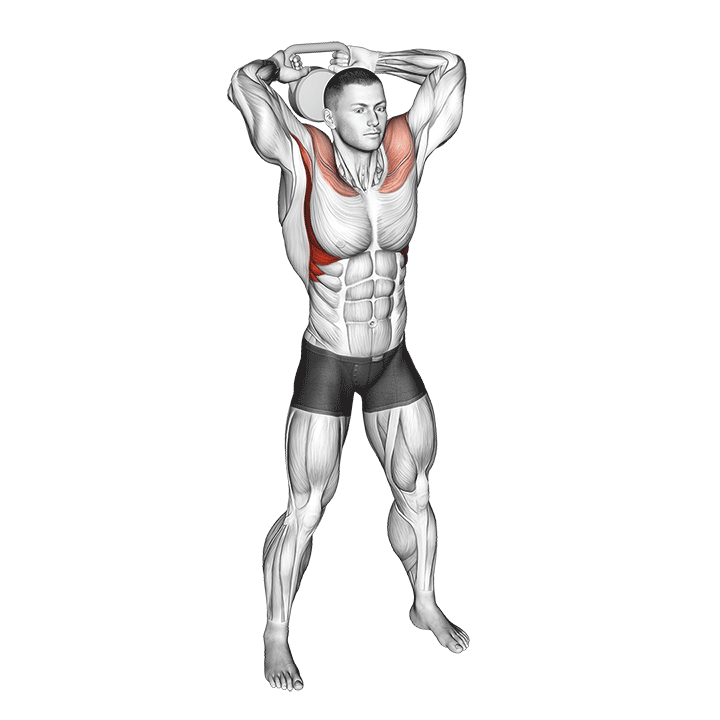
Unlocks tight shoulders & thoracic spine. Prevents that “cement back” feeling.
How to do it RIGHT:
- Grip: Hold the kettlebell UPSIDE DOWN by the horns, close against your chest. Fingers wrapped firmly.
- Stance: Stand tall, feet shoulder-width, core BRACED (like you’re about to get tapped in the stomach).
- The Move:
- Slowly circle the bell around your head CLOCKWISE, keeping it close. Imagine tracing a tight circle with the bottom of the bell.
- Lead with your elbows, NOT your hands. Keep your ribs down – don’t arch your back!
- Complete the circle, bringing it back to your chest.
- Repeat 5-8 circles clockwise, then 5-8 counter-clockwise.
2) Kettlebell Goblet Squat
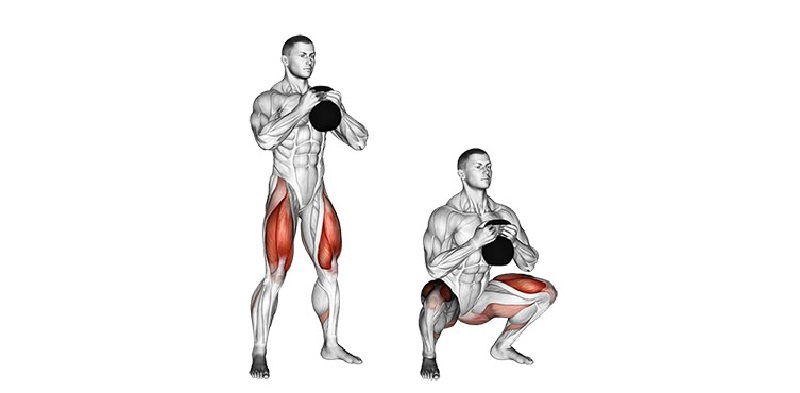
Teaches perfect squat mechanics, builds legs & core, improves mobility.
How to do it RIGHT:
- Grip: Hold one kettlebell vertically by the horns. “Cup” the bottom with your palms. Smash it against your chest/sternum.
- Stance: Feet slightly wider than hips, toes turned out comfortably (15-30 degrees).
- The Descent:
- Take a BIG breath, brace your core HARD.
- Push hips BACK first, THEN bend knees.
- Keep elbows pointed DOWN, driving them INSIDE your knees (this forces your chest up!).
- Squat as DEEP as you can while keeping heels down and chest proud. Aim for thighs at least parallel to the floor.
- The Ascent:
- Drive HARD through your entire foot (especially heels!).
- Push the floor away. Squeeze glutes at the top.
- Exhale at the top.
3) Kettlebell Overhead Press
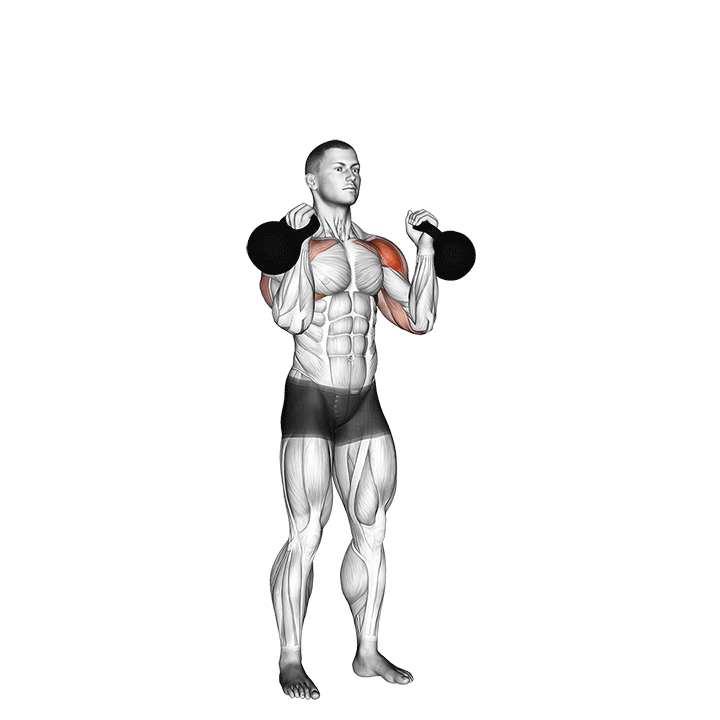
Builds strong, stable shoulders and a rock-solid core. Functional strength gold.
How to do it RIGHT:
- Start Position (The Rack): Clean or lift the bell to the rack position (bell resting on back of forearm, tucked tight into chest, elbow glued to ribs, wrist straight). Stand tall, feet shoulder-width.
- Brace & Press:
- Take a sharp breath, brace your core AND glutes hard (like you’re zipping up a tight suit!).
- Press the bell STRAIGHT UP overhead. Imagine punching the ceiling.
- Keep your ribcage DOWN – don’t lean back excessively!
- Fully lock out your arm, shoulder packed down (away from ear).
- The Lowering:
- Control the bell DOWN. Don’t drop it!
- Guide it precisely back into the rack position.
- Reset your brace before the next rep.
4) Kettlebell Swing
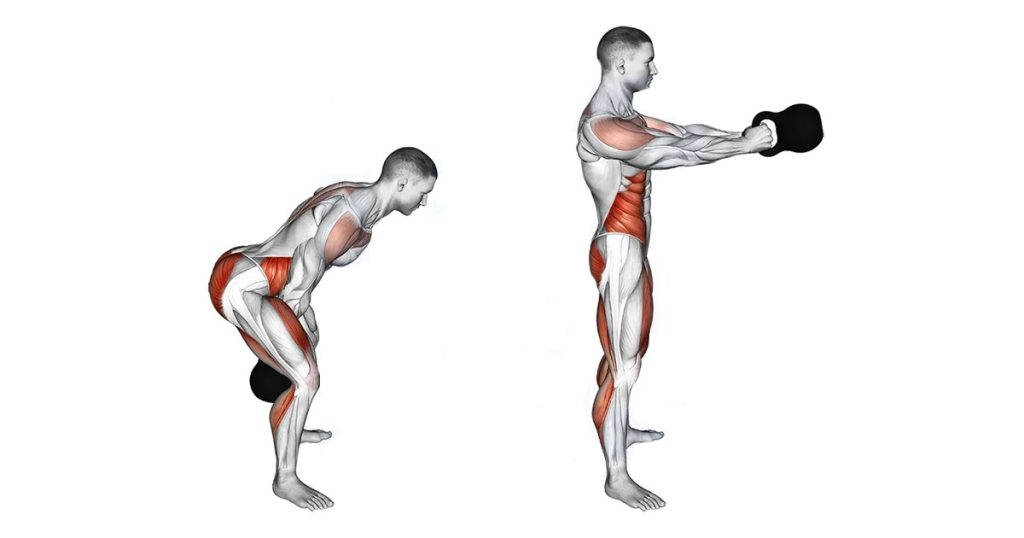
Builds explosive power, bulletproofs your posterior chain (hams/glutes/back), insane conditioning.
How to do it RIGHT:
- Setup: Place bell about a foot in front of you. Hinge at hips, slight knee bend, grab handle with BOTH hands (knuckles forward/down). Arms straight, shoulders pulled back.
- The Hike Back:
- Hike the bell BACK between your legs (like hiking a football). Let your torso come forward, pushing hips BACK. Weight on heels. Feel the stretch in your hamstrings.
- The Explosion:
- VIOLENTLY snap your hips forward (stand up FAST!). Squeeze glutes HARD.
- Let this hip thrust propel the bell forward. Arms are just ropes holding on!
- Bell floats to chest/shoulder height. Body forms a straight line (plank) at the top.
- The Backswing:
- Let the bell fall BACK down, guiding it with your hips.
- Immediately re-hinge at the hips, loading the hamstrings for the next rep.
5) Bent-over Row
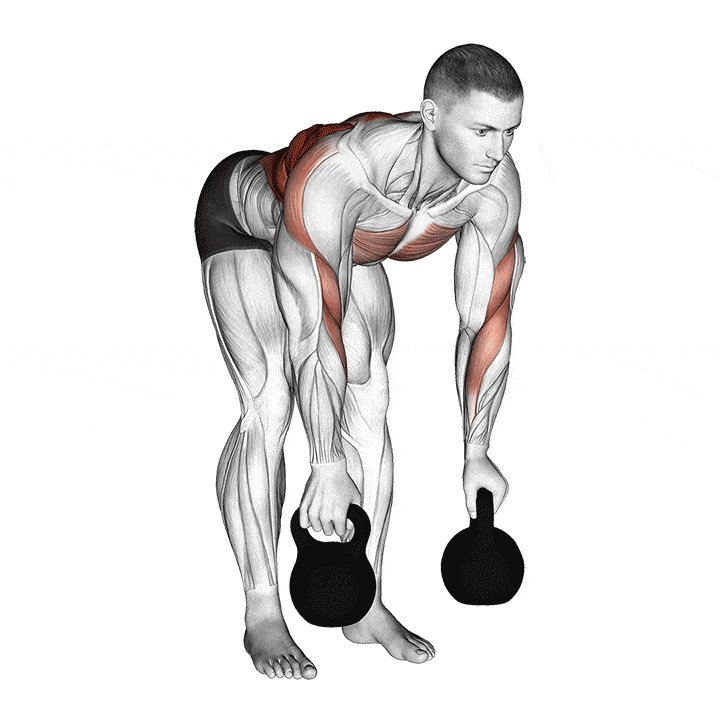
Targets lats, rhomboids, biceps. Improves posture. Essential pulling balance to presses.
How to do it RIGHT:
- Setup: Place one hand and knee FIRMLY on a sturdy bench (hand under shoulder, knee under hip). Keep a FLAT BACK – parallel to the floor. Plant other foot firmly on the ground.
- Grip: Hold the KB in your free hand, arm straight down. Shoulder pulled down (not shrugged).
- The Row:
- Brace your core. Keep your neck neutral (look at the floor).
- PULL the bell STRAIGHT UP towards your LOWER RIB CAGE/hip. Lead with your ELBOW.
- SQUEEZE your shoulder blade back at the top.
- The Lowering:
- CONTROL the bell back down to full arm extension. Feel the stretch in your lat.
- Reset tension before next rep.
6) Front Rack Reverse Lunge
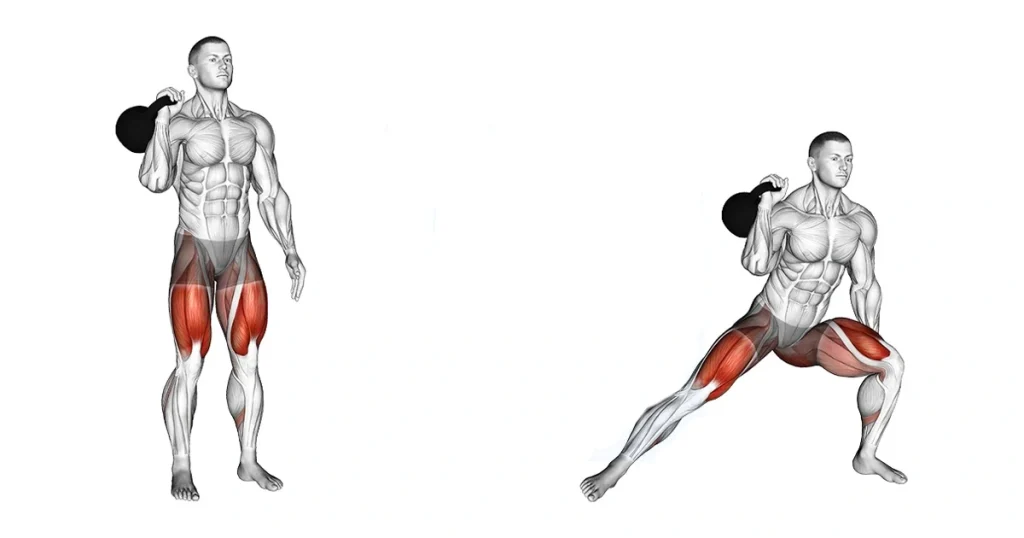
Hits quads, glutes, hamstrings. Challenges balance & core more than forward lunges. Safer on knees.
How to do it RIGHT:
- Start Position: Hold one kettlebell securely in the RACK position (tucked tight to chest, wrist straight, elbow down). Stand tall, feet hip-width.
- The Lunge:
- Take a CONTROLLED step BACKWARDS with one foot. Land on the ball of that foot.
- Lower STRAIGHT DOWN. Aim to get both knees to roughly 90-degree angles.
- Keep your TORSO UPRIGHT the entire time. Core braced.
- Front knee stays tracking over your front ankle (don’t let it cave in!).
- The Drive:
- Push HARD through the heel of your FRONT foot.
- Bring your back foot forward, returning to the start position.
- Stay controlled. Reset your rack position if needed.
Pick 2-3 of kettlebell for beginners workouts to start your next session. Focus on perfect form for 3 sets of 8-12 reps (except swings – go for 15-20 reps with good power). Consistency beats intensity every single time. You’ve got this! Now go lift something heavy (safely!).
Welcome! I’m Jordan Mitchell, the dedicated editor at Leadman Fitness, where we specialize in manufacturing high-quality bumper plates, barbells, weight machines, kettlebells, and dumbbells. With a passion for fitness and a keen eye for detail, I ensure that our product information is clear, accurate, and engaging for our customers. My role involves collaborating closely with our design and production teams to highlight the innovative features and superior craftsmanship that set Leadman Fitness apart in the industry. Whether you’re a professional athlete or a fitness enthusiast, I’m here to provide you with the information you need to achieve your training goals with our top-of-the-line equipment.
